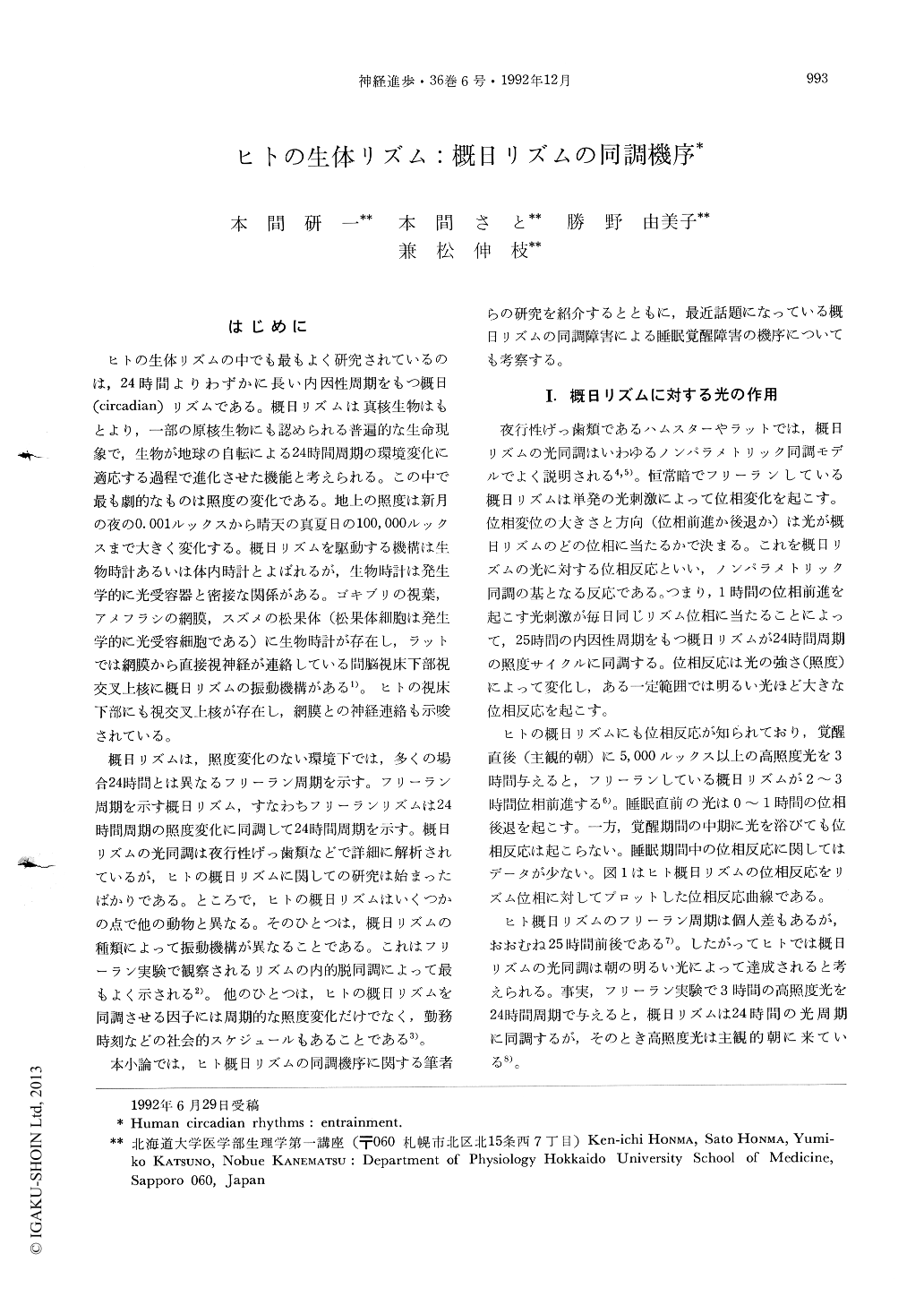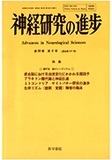Japanese
English
- 有料閲覧
- Abstract 文献概要
- 1ページ目 Look Inside
- サイト内被引用 Cited by
はじめに
ヒトの生体リズムの中でも最もよく研究されているのは,24時間よりわずかに長い内因性周期をもつ概日(circadian)リズムである。概日リズムは真核生物はもとより,一部の原核生物にも認められる普遍的な生命現象で,生物が地球の自転による24時間周期の環境変化に適応する過程で進化させた機能と考えられる。この中で最も劇的なものは照度の変化である。地上の照度は新月の夜の0.001ルックスから晴天の真夏日の100,000ルックスまで大きく変化する。概日リズムを駆動する機構は生物時計あるいは体内時計とよばれるが,生物時計は発生学的に光受容器と密接な関係がある。ゴキブリの視葉,アメフラシの網膜,スズメの松果体(松果体細胞は発生学的に光受容細胞である)に生物時計が存在し,ラットでは網膜から直接視神経が連絡している間脳視床下部視交叉上核に概日リズムの振動機構がある1)。ヒトの視床下部にも視交叉上核が存在し,網膜との神経連絡も示唆されている。
概日リズムは,照度変化のない環境下では,多くの場合24時間とは異なるフリーラン周期を示す。フリーラン周期を示す概日リズム,すなわちフリーランリズムは24時間周期の照度変化に同調して24時間周期を示す。概日リズムの光同調は夜行性げっ歯類などで詳細に解析されているが,ヒトの概日リズムに関しての研究は始まったばかりである。ところで,ヒトの概日リズムはいくつかの点で他の動物と異なる。そのひとつは,概日リズムの種類によって振動機構が異なることである。これはプリーラン実験で観察されるリズムの内的脱同調によって最もよく示される2)。他のひとつは,ヒトの概日リズムを同調させる因子には周期的な照度変化だけでなく,勤務時刻などの社会的スケジュールもあることである3)。
In the past decade, much progress has been achieved in the entrainment mechanism of human circadian rhythms. Artificial light-dark cycles with bright light over than 5,000 lux during the light period were demonstrated to entrain the free-running human circadian rhythm. Moreover, a single bright light pulse phase-shifted the free-running rhythm in a phase dependent manner, and a phase-response curve for bright light was described. In addition to the phase-shifting effect, bright light was suggested to change the amplitude of circadian oscillation. When the sleep-wake schedule was suddenly phase-advanced, the rectal temperature rhythm reentrained to a new sleep schedule gradually (transient period). In the transient period, the temperature rhythm was damped temporally, namely its oscillatory amplitude was decreased. However, when bright light was introduced in the transient period, such a damping was not observed. Bright light was also suggested to strengthen the oscillatory coupling between the sleep-wake cycle and the rectal temperature rhythm. Under the free-running condition, these two rhythms are often desynchronized to each other and show different free-running periods. A single bright light as well as a bright light cycle of 24 hour period were demonstrated to resynchronize the two circadian rhythms. Based on these findings bright light is concluded to regulate the human circadian rhythm.

Copyright © 1992, Igaku-Shoin Ltd. All rights reserved.


